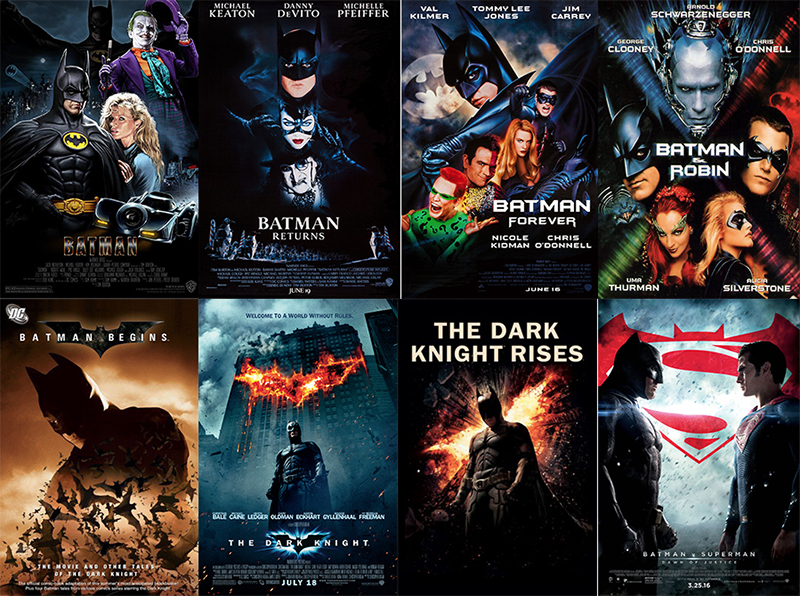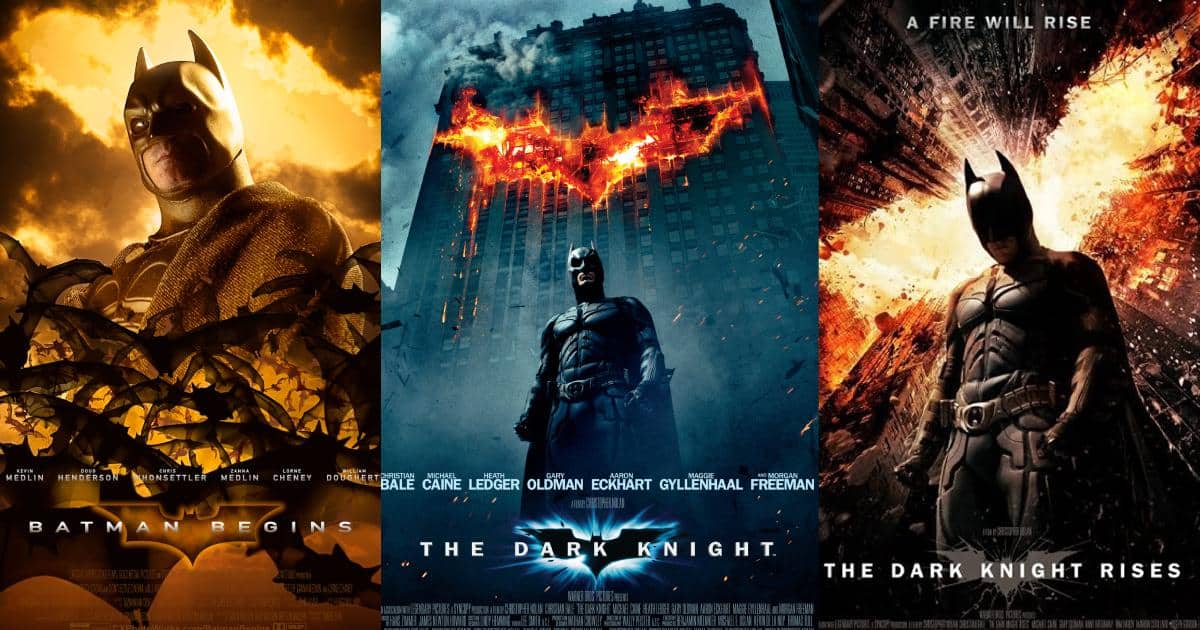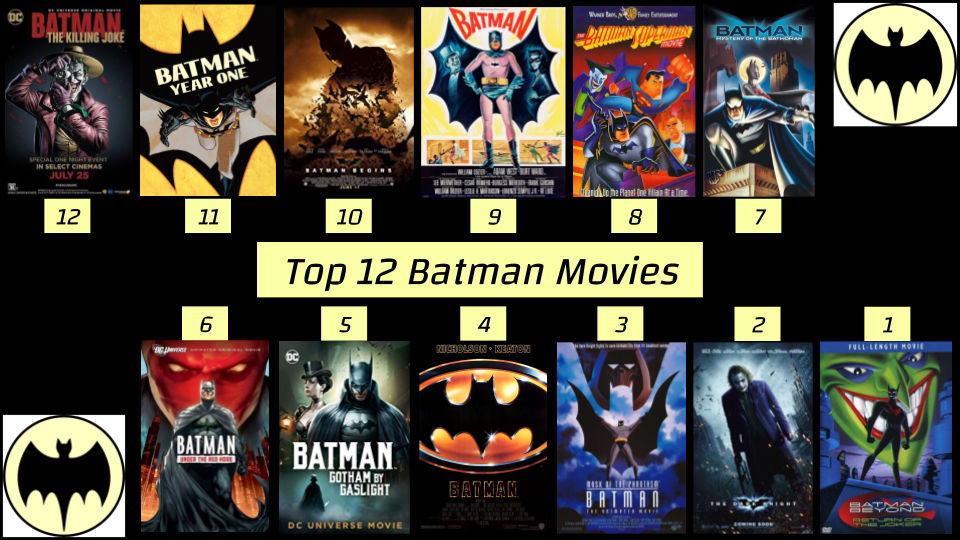The Comprehensive Chronological Guide To Batman: From His Debut To The Present
Batman: A Comprehensive Look into the Dark Knight's History and Legacy
Batman, the iconic superhero created by Bob Kane and Bill Finger, has captivated audiences for decades. His journey from a wealthy playboy to a brooding vigilante has been chronicled in countless comic books, films, and television shows, making him one of the most recognizable and beloved characters in popular culture.
This article will delve into the rich history and legacy of Batman, exploring his origins, key aspects, and cultural impact. We will examine the character's motivations, gadgets, allies, and villains, as well as the evolution of his persona over the years.
| Real Name | Bruce Wayne |
|---|---|
| Occupation | CEO of Wayne Enterprises, Vigilante |
| Base of Operations | Gotham City |
| First Appearance | Detective Comics #27 (1939) |
Batman
Secret Identity: Bruce Wayne's dual identity as Batman allows him to operate in both the public and criminal underworld, providing him with a unique advantage in his fight against crime.
Detective Skills: Batman is known for his exceptional detective skills, which he uses to solve complex crimes and uncover the secrets of Gotham City's criminal elite.
Gadgets and Technology: Batman's utility belt and Batmobile are equipped with an array of gadgets and technologies that aid him in his crime-fighting endeavors.
Allies and Sidekicks: Batman has a network of allies, including Robin, Batgirl, and Nightwing, who assist him in his mission to protect Gotham City.
Villains and Rogues Gallery: Batman's rogue gallery of villains includes iconic characters such as the Joker, Two-Face, and the Riddler, each with their own unique motivations and criminal schemes.
Batman
Batman has had a profound impact on popular culture, inspiring countless adaptations, merchandise, and fan communities. His dark and brooding persona has made him a relatable and iconic figure, representing the struggle between good and evil.
The character's enduring popularity can be attributed to his complex characterization, thrilling adventures, and timeless themes of justice and redemption.
Batman in Order
Batman, the iconic superhero created by Bob Kane and Bill Finger, has enthralled audiences for decades. His journey from a wealthy playboy to a brooding vigilante has been chronicled in countless comic books, films, and television shows, making him one of the most recognizable and beloved characters in popular culture.
- Secret Identity: Bruce Wayne's dual identity allows him to operate in both the public and criminal underworld.
- Detective Skills: Batman's exceptional detective abilities aid him in solving complex crimes.
- Gadgets and Technology: His utility belt and Batmobile are equipped with an array of gadgets and technologies.
- Allies and Sidekicks: Batman has a network of allies, including Robin, Batgirl, and Nightwing.
- Villains and Rogues Gallery: His rogue gallery of villains includes iconic characters such as the Joker and Two-Face.
- Cultural Impact: Batman has had a profound impact on popular culture, inspiring countless adaptations and merchandise.
- Timeless Themes: His adventures explore timeless themes of justice and redemption.
These key aspects work together to create a complex and compelling character. Batman's secret identity allows him to move seamlessly between the worlds of the wealthy elite and the criminal underworld. His detective skills enable him to uncover the truth behind Gotham City's most heinous crimes. His gadgets and technology give him an edge in his fight against evil. His allies provide him with support and companionship in his. And his villains challenge him both physically and mentally, forcing him to confront his own darkness.
| Real Name | Bruce Wayne |
|---|---|
| Occupation | CEO of Wayne Enterprises, Vigilante |
| Base of Operations | Gotham City |
| First Appearance | Detective Comics #27 (1939) |
Batman's enduring popularity is a testament to his enduring appeal. He is a symbol of hope and justice in a world often shrouded in darkness. His adventures continue to entertain and inspire audiences of all ages, making him one of the most iconic and beloved superheroes of all time.
Secret Identity: Bruce Wayne's dual identity allows him to operate in both the public and criminal underworld.
Batman's secret identity is a crucial aspect of his character, enabling him to operate effectively in both the public and criminal underworld. As Bruce Wayne, he can move seamlessly within Gotham City's high society, gathering information and maintaining a faade of normalcy. This allows him to infiltrate criminal organizations and uncover their secrets without arousing suspicion.
At the same time, Batman's secret identity provides him with a level of protection. His enemies may know of Bruce Wayne, but they are unaware of his true identity. This allows him to operate without fear of retaliation against his loved ones or allies.
The secret identity also adds a layer of complexity to Batman's character. Bruce Wayne is a complex individual, torn between his desire to live a normal life and his commitment to fighting crime. This inner conflict adds depth to his character and makes him more relatable to audiences.
In conclusion, Batman's secret identity is an essential component of his character. It allows him to operate effectively in both the public and criminal underworld, provides him with protection, and adds depth to his character.
Detective Skills: Batman's exceptional detective abilities aid him in solving complex crimes.
Batman's exceptional detective skills are a cornerstone of his crime-fighting arsenal. His keen intellect, combined with his mastery of forensic science and investigative techniques, allows him to unravel even the most complex and puzzling crimes.
- Analytical Mind: Batman possesses an analytical mind that allows him to quickly assess a crime scene, identify patterns, and deduce the most likely sequence of events.
- Forensic Expertise: Batman is highly skilled in forensic science, including fingerprint analysis, ballistics, and DNA profiling. This expertise enables him to gather and interpret physical evidence, linking suspects to crimes.
- Interrogation Techniques: Batman is adept at interrogation techniques, using a combination of psychology and intimidation to extract information from suspects.
- Network of Informants: Batman has cultivated a network of informants throughout Gotham City, providing him with access to valuable information and inside knowledge.
These detective skills are essential to Batman's success as a crime-fighter. They allow him to identify the perpetrators of crimes, gather evidence against them, and ultimately bring them to justice. Without his keen intellect and investigative abilities, Batman would be unable to protect Gotham City from the forces of evil.
Gadgets and Technology: His utility belt and Batmobile are equipped with an array of gadgets and technologies.
Batman's gadgets and technology are an essential part of his crime-fighting arsenal. They allow him to overcome physical limitations, gather information, and outsmart his enemies. His utility belt is equipped with a variety of tools and devices, including batarangs, grappling hooks, and smoke bombs. The Batmobile is a high-tech vehicle that provides Batman with transportation, protection, and an array of weaponry.
- Enhanced Capabilities: Batman's gadgets and technology enhance his physical capabilities, allowing him to perform feats that would be impossible for a normal human. For example, his grappling hook allows him to scale buildings and cross chasms, while his batarangs can be used to disarm opponents and disable vehicles.
- Information Gathering: Batman's gadgets also allow him to gather information and conduct surveillance. For example, his Batcomputer provides him with access to vast databases and analytical tools, while his surveillance equipment allows him to monitor suspects and track their movements.
- Tactical Advantage: Batman's gadgets and technology give him a tactical advantage in combat. For example, his smoke bombs can be used to create diversions and escape from dangerous situations, while his Batmobile is equipped with an array of weapons that can neutralize threats.
- Psychological Warfare: Batman's gadgets can also be used for psychological warfare. For example, his Bat-Signal can be used to summon help or intimidate criminals, while his voice modulator can be used to disguise his voice and sow confusion among his enemies.
In conclusion, Batman's gadgets and technology are an essential part of his crime-fighting arsenal. They allow him to overcome physical limitations, gather information, outsmart his enemies, and wage psychological warfare. Without his gadgets and technology, Batman would be unable to protect Gotham City from the forces of evil.
Allies and Sidekicks: Batman has a network of allies, including Robin, Batgirl, and Nightwing.
Batman's network of allies and sidekicks is a crucial component of his crime-fighting efforts. These allies provide Batman with support, companionship, and specialized skills that enhance his ability to protect Gotham City.
One of Batman's most well-known allies is Robin, a young orphan who was trained by Batman to become his partner in crime-fighting. Robin provides Batman with a valuable source of assistance, both in combat and in investigations. He is also a symbol of hope for the people of Gotham City, representing the possibility of redemption and a brighter future.
Batgirl is another important ally of Batman. She is a skilled martial artist and computer hacker, and she often provides Batman with technical support and assistance in his investigations. Batgirl is also a strong and independent character, and she is not afraid to speak her mind, even to Batman.
Nightwing is a former Robin who has grown into a skilled and independent crime-fighter in his own right. He is a master of martial arts and acrobatics, and he is also a skilled detective. Nightwing often works with Batman on cases, and he is always willing to lend a helping hand.
Batman's allies and sidekicks are a valuable asset to his crime-fighting efforts. They provide him with support, companionship, and specialized skills that enhance his ability to protect Gotham City. Without his allies, Batman would be unable to accomplish as much as he does, and the city would be a much more dangerous place.
Villains and Rogues Gallery: His rogue gallery of villains includes iconic characters such as the Joker and Two-Face.
Batman's rogues gallery of villains is an essential component of the character and the Batman mythos. These villains provide Batman with a constant challenge, forcing him to confront his own darkness and the evil that exists in the world. The villains also serve as a reflection of Batman's own psyche, representing the various aspects of his personality that he struggles to control.
The Joker is perhaps Batman's most well-known villain. He is a psychopathic criminal who is obsessed with chaos and anarchy. The Joker's crimes are often random and senseless, and he takes pleasure in causing pain and suffering. Batman's relationship with the Joker is complex and twisted. Batman is determined to stop the Joker's reign of terror, but he also recognizes that the Joker is a part of him, representing the darkness that he must constantly battle.
Two-Face is another iconic Batman villain. He is a former district attorney who was scarred both physically and mentally after a mob attack. Two-Face is a tragic figure, torn between his desire for justice and his thirst for revenge. He often flips a coin to make decisions, representing his own inner conflict.
Batman's villains are not simply one-dimensional evil characters. They are complex and multifaceted, reflecting the complexities of human nature. They challenge Batman's beliefs and force him to confront his own inner demons. Without his villains, Batman would be a much less interesting and compelling character.
Cultural Impact: Batman has had a profound impact on popular culture, inspiring countless adaptations and merchandise.
Batman's cultural impact is undeniable. He is one of the most recognizable and beloved superheroes in the world, and his image has been used in countless adaptations and merchandise. This cultural impact is a testament to the character's enduring appeal and his relevance to our society.
One of the reasons for Batman's popularity is his relatability. He is a complex and flawed character, who struggles with his own inner demons. This makes him relatable to audiences, who can see themselves in his struggles. Additionally, Batman's commitment to justice and his willingness to fight for what he believes in make him an aspirational figure.
The cultural impact of Batman can also be seen in the way he has been used in popular culture. Batman has been featured in countless films, television shows, comic books, video games, and other media. Each adaptation brings a new perspective to the character, and helps to keep him relevant to new generations of fans.
The cultural impact of Batman is significant. He is a character who has transcended his origins as a comic book character and become a global icon. His image is recognized around the world, and his stories continue to inspire and entertain audiences of all ages.
Timeless Themes: His adventures explore timeless themes of justice and redemption.
Batman's adventures explore timeless themes of justice and redemption, which are central to his character and resonate with audiences of all ages. His unwavering commitment to justice drives him to fight against the forces of evil in Gotham City, even when faced with overwhelming odds. Through his actions, Batman embodies the idea that justice must always prevail, no matter how difficult the battle may be.
The theme of redemption is also deeply ingrained in Batman's character. Despite his tragic past, Batman chooses to use his pain and anger to fight for good. He believes that everyone deserves a chance at redemption, even those who have committed terrible crimes. This belief is evident in his relationships with characters like Catwoman and Harley Quinn, both of whom have struggled with their own demons but have found a path to redemption through Batman's guidance.
The timeless themes of justice and redemption are essential to Batman's character and his enduring popularity. They make him a relatable and inspiring figure, and they remind us that even in the darkest of times, there is always hope for justice and redemption.
Frequently Asked Questions About Batman in Order
This section addresses common questions and misconceptions surrounding the topic of Batman in order, providing concise and informative answers.
Question 1: In what order should I read the Batman comic books?
Answer: The recommended reading order for Batman comic books is based on the character's chronological history. This order allows readers to follow Batman's journey from his origins to his present-day adventures.
Question 2: What are the key storylines that define Batman's character?
Answer: Some of the most iconic and influential Batman storylines include "The Killing Joke," "The Dark Knight Returns," and "Batman: Year One." These stories explore Batman's origins, his relationships with his allies and villains, and his unwavering commitment to justice.
Summary of key takeaways or final thought:
Understanding the chronological order of Batman comic books and familiarizing oneself with key storylines is crucial for fully appreciating the character's development and impact on popular culture.
Conclusion
Batman's chronological journey, as depicted in comic books, provides a comprehensive understanding of his character's evolution. Key storylines like "The Killing Joke" and "Batman: Year One" delve into his origins, relationships, and unwavering commitment to justice. Exploring Batman in order allows readers to appreciate the complexities of his character and his enduring impact on popular culture.
Batman's unwavering dedication to justice, even amidst personal struggles and the darkness that surrounds him, serves as a timeless reminder of the power of hope and redemption. His stories continue to inspire and resonate with audiences, solidifying his status as an iconic and enduring superhero.
Article Recommendations
- Meet Jeffreyean Morgan The Heartthrob Of Greys Anatomy
- How To Master The Art Of Crew Gainesoing A Comprehensive Guide



Detail Author:
- Name : Emmitt D'Amore
- Username : brannon.ratke
- Email : eldred32@gmail.com
- Birthdate : 1972-01-14
- Address : 572 Dietrich Parkways Briamouth, NY 41630
- Phone : (248) 563-5630
- Company : Parisian Group
- Job : Interior Designer
- Bio : Minus accusamus dolor omnis enim. Non voluptas voluptatum et pariatur dignissimos. Et porro quis voluptas ea repellat. Incidunt dignissimos veritatis nam doloremque blanditiis.
Socials
facebook:
- url : https://facebook.com/ypowlowski
- username : ypowlowski
- bio : Facere sed maxime assumenda non. Dolores harum nihil omnis aut non autem.
- followers : 484
- following : 1711
instagram:
- url : https://instagram.com/yasmin.powlowski
- username : yasmin.powlowski
- bio : Et eveniet et natus iusto expedita. Qui occaecati distinctio et occaecati.
- followers : 570
- following : 2169
tiktok:
- url : https://tiktok.com/@yasmin.powlowski
- username : yasmin.powlowski
- bio : Cumque ut voluptatibus ipsam repellendus dolores est qui impedit.
- followers : 1544
- following : 2265